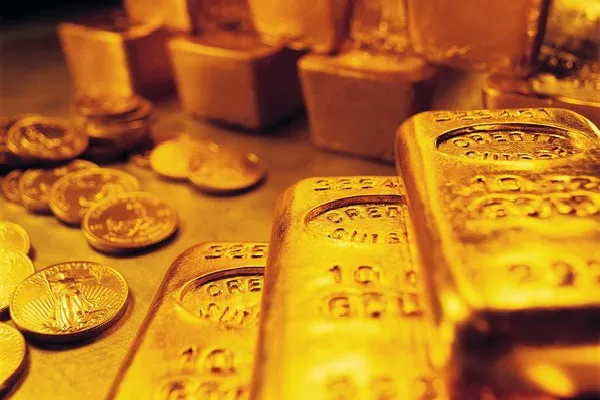Gold and the U.S. dollar (USD) are two financial pillars with a complex and intertwined relationship. This relationship has far-reaching implications for the global economy and financial markets. In this article, we will explore the intricate connection between gold futures and the USD, shedding light on how changes in one can impact the other.
I. Understanding Gold Futures and the USD
To comprehend the relationship between gold futures and the USD, let’s first establish a clear understanding of each component.
1. Gold Futures
Gold futures are standardized financial contracts that allow investors to buy or sell a specified quantity of gold at a predetermined price on a future date. These contracts are actively traded on commodities exchanges such as the Chicago Mercantile Exchange (CME) and the Intercontinental Exchange (ICE). Gold futures serve various purposes, including hedging and speculation.
2. The U.S. Dollar (USD)
The U.S. dollar is the world’s primary reserve currency and a dominant force in the global financial system. It serves as the standard currency for many international transactions, including commodities trading. The USD’s value fluctuates in foreign exchange markets, and its strength or weakness can have profound effects on global trade and financial stability.
II. The Inverse Relationship: Gold and the USD
One of the fundamental dynamics between gold and the USD is their inverse relationship. This means that when the USD strengthens, the price of gold typically falls, and when the USD weakens, the price of gold tends to rise. Here’s how this relationship works:
USD Strength and Gold Prices
When the USD strengthens, it becomes more expensive for foreign investors to purchase gold priced in USD.
A stronger USD can lead to reduced global demand for gold, causing gold prices to decline.
Investors may move their funds from gold to USD-denominated assets like U.S. Treasury bonds, which offer higher yields when the USD appreciates.
USD Weakness and Gold Prices
Conversely, when the USD weakens, gold becomes more affordable for foreign investors.
A weaker USD can stimulate global demand for gold, potentially driving up gold prices.
Investors may seek refuge in gold as a hedge against a depreciating currency and economic uncertainties.
III. Factors Influencing the Relationship
Several factors influence the relationship between gold futures and the USD. It’s essential to consider these factors when analyzing how changes in one can affect the other:
1. Economic Data
Strong economic data in the United States can bolster the USD, potentially pressuring gold prices downward.
Weak economic data may weaken the USD and support higher gold prices.
2. Central Bank Policies
Central bank decisions, such as changes in interest rates and monetary policies, can significantly impact the USD’s strength.
Lower interest rates and quantitative easing measures often weaken the USD, benefiting gold prices.
3. Geopolitical Events
Geopolitical tensions and crises can trigger a flight to safety, causing investors to flock to gold.
Such events can also lead to USD fluctuations as it is viewed as a safe-haven currency.
4. Inflation Expectations
Rising inflation expectations can erode the purchasing power of the USD, making gold more attractive as a hedge against inflation.
5. Market Sentiment
Market sentiment, investor behavior, and speculative trading can amplify short-term price movements in both gold and the USD.
IV. FAQs (Frequently Asked Questions)
1. Can the relationship between gold and the USD change over time?
Yes, the relationship between gold and the USD can evolve due to shifts in economic conditions, central bank policies, and global events.
2. How does the USD’s status as the world’s primary reserve currency affect gold prices?
The USD’s status as a global reserve currency can impact gold prices, as changes in the USD’s value can influence international demand for gold.
3. Are there exceptions to the inverse relationship between gold and the USD?
Yes, there can be exceptions. Factors such as market sentiment, geopolitical events, and economic data can lead to temporary deviations from the inverse relationship.
4. How do traders and investors use the gold-USD relationship in their strategies?
Traders and investors may incorporate the gold-USD relationship into their strategies to make informed decisions. For example, they may consider this relationship when diversifying their portfolios or during currency and commodities trading.
5. What role do gold futures play in this relationship?
Gold futures serve as a vehicle for traders and investors to speculate on or hedge against gold price movements. Changes in the USD can influence the demand and pricing of gold futures contracts.
In conclusion, the relationship between gold futures and the USD is intricate and subject to various influences. Understanding this relationship is vital for traders and investors who seek to navigate the complexities of both the gold market and foreign exchange markets. Changes in the USD can significantly impact gold prices, making it crucial to monitor economic indicators, central bank policies, geopolitical developments, and market sentiment when engaging in gold futures trading or investment.

